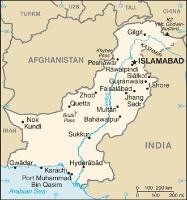Following years of promising gains since 2001, Afghanistan is in a tailspin. Not long ago, a sophisticated Taliban assault on a Kandahar prison freed 1,200 inmates, including 350 Taliban members. The attack came only weeks after Afghan President Hamid Karzai survived a fourth assassination attempt. The main forces behind the country's downward spiral are al-Qaida and the Taliban, which have found sanctuary in the vast unpoliced region of western Pakistan known as the Federally Administered Tribal Areas (FATA). Stabilizing the Afghan-Pakistani front of the war on terrorism will require U.S. policymakers to re-examine the fatal misconception that they face only two options: either heading full force into FATA, heedless of the desires of Islamabad and the Pakistani people, or hoping Pakistan's beleaguered army miraculously revitalizes itself. A coherent U.S. policy toward FATA must not be reduced to these two options. Here, the global war on terrorism's wider strategic pattern necessitates a third alternative.
A Coherent Strategy for Pakistan’s Tribal Areas Would Draw Lessons from Anbar

